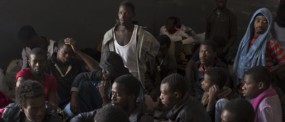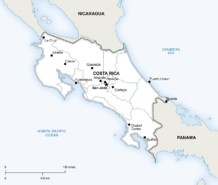Posted on 04 Mar 2015
A counter-trafficking consultant and former special rapporteur to the UN on contemporary slavery, Gulnara Shahinian has spent her career trying to stop an age-old crime that persists today. Over the last 25 years, Shahinian, who is Armenian, has travelled the world, gaining first-hand experience of the plight of the victims of trafficking – from Romanian children exploited by organized crime syndicates, to women living in servitude in Mauritania, to Bolivians in forced labor clothing factories, to gold miners in Peru, to children mining sapphires in Madagascar. Their stories of suffering are what motivate her to take action.
Shahinian’s counter-trafficking career began when, as part of a research project on migration, she tracked down women from Armenia and other countries from the Commonwealth of Independent States who had been trafficked to the United Arab Emirates and sold into sex work. “I was haunted by their stories of humiliation and violence. Some of the women, who saw no way out, even committed suicide. I would spend nights crying but I realized that being emotional wasn’t going to fix anything. It was critical to act,” she says.
Shahinian has since worked as a top-level consultant to the UN, other international organizations and governments to eradicate slavery. She has worked with the government of Mauritania to develop a Road Map to end slavery, which has now been signed into law, and has participated in official missions to assist Brazil, Peru, Ecuador, Ghana, Madagascar and Kazakhstan in implementing their own programs.
Although her mandate with the UN is over, Shahinian is still obsessed with combatting trafficking and slavery and continues to work as an independent consultant. “I won’t give it up,” she says, despite the many challenges involved in “bringing an understanding of these crimes to governments, to the general population and especially to those it is happening to”. Shahinian is currently a member of GRETA (Group of Experts on Action against Trafficking in Human Beings), which monitors the implementation of the Convention on Action against Trafficking in Human Beings. Shahinian studied foreign languages and international human rights law and lives in Yerevan, Armenia, the city she served as deputy mayor in the 1990s, with her husband, a theoretical physics academic. She has two children and four grandchildren. Shahinian describes herself as a longtime “peace activist”, speaks six languages and loves to unwind with flamenco and classical music. She shares some of her knowledge with the GI.
You must have a pretty good idea of the extent to which slavery, human trafficking and forced labor occur around the world. Please put us in the picture.
The data tells us that there are around 20.5 million victims of forced labor and trafficking around the world but – for a variety of reasons – accurate statistics are hard to come by. For one thing, methodologies and data collection systems vary and states don’t always use the same definitions as those in the Palermo Protocol. I think that figure quoted is only the tip of the iceberg since there are so many unidentified victims (including those who don’t want to be identified).
As far as slavery goes, there are almost no statistics because so many victims are invisible to society and far from the reach of researchers and politicians. They work in the informal labor market, in private homes, their children are born into slavery and are not registered or documented. This cycle continues from one generation to the next, unseen and unaddressed.
Slavery was outlawed many years ago. How is it possible that it still exists today?
The 1926 Slavery Convention and the 1956 Supplementary Convention on the Abolition of Slavery saw a limited number of states criminalize slavery. But even if countries have legislation outlawing slavery, this is rarely enforced. In many countries, religious-based slavery, caste-based slavery, decent-based slavery, bonded labor and early forced marriage are still rampant. These practices are so interwoven in the fabric of society in some instances that any action to abolish them finds strong resistance on many levels.
As far as trafficking goes, almost all countries have ratified the Convention against Transnational Organized Crime (which contains protocols against trafficking) and many have criminalized it in their local legislation. They have also put programs and institutional mechanisms in place but it seems, nevertheless, that we are at the beginning of our journey.
What are the forces that propel these types of crimes?
The root causes are many and not well studied. Poverty, discrimination, violence, escape from hardships and the demand for cheap labor, are among them. People leave terrible conditions at home in search of a better life. They may leave willingly, but they are then tricked into situations of bondage by being indebted to those who traffic or employ them. Often you will find people living in slave-like conditions but they don’t want to return home because they say the situation is worse there.
How does the economic crisis fuel the problem?
The deepening economic crisis not only pushes people into bondage, it also rolls back progress. In some countries, efforts to combat trafficking have slowed down because of pressure from corporates. For example, in Brazil big business is putting pressure on the judiciary to outlaw the government’s “dirty list” of companies” – a lauded initiative that currently identifies 187 companies associated with forced labor – because of profit losses.
Also, some NGO programs that support the victims of trafficking have closed down due to lack of funding.
In what parts of the world is human trafficking and slavery at its worst and why is this so?
No state is immune from trafficking in humans and forced labor. As far as slavery goes, Asia and Africa are the worst culprits, although early forced marriage is a reality in Europe and the United States too. In many countries there is a very thin line between the worst forms of child labor and slavery, like restavek in Haiti (children used as domestic slaves) and children working in the mining sector in Latin America and Asia.
To what extent do slavery and human trafficking intersect with other forms of organized crime?
These crimes rarely happen in isolation. Human trafficking facilitates many other criminal activities. I have been documenting instances of child labor in artisanal mining, where entire families have been forced into other illegal activities like drug selling and prostitution. Illegal mining also causes environmental degradation. Organized criminal groups usually corrupt regional and state officials and threaten police to keep their crimes going and keep control over the entire region.
What are some of the critical components of any plan to combat human trafficking and slavery?
These crimes are very dynamic and our responses and actions have to change accordingly. The solutions lie in the intersection of multiple disciplines and require complex holistic responses. We still have to invest knowledge in understanding the root causes and develop holistic methodologies to address them, so that we can focus on prevention and early warning, rather than tackling these crimes once they’ve already happened. But prevention requires a better understanding of our societies.
You have spent much of your career helping countries to combat slavery and human trafficking. Tell us about your Roadmap?
This was the approach used to combat slavery and trafficking in Mauritania, the country with the highest prevalence of slavery in the world and the last to abolish it. Up until recently people were still being born into slavery. They were being psychologically imprisoned by their masters, exploited and forced to work, often raped and abused and threatened with death if they tried to leave. Critically, the government showed political will to change the situation. In March last year, Mauritania adopted the Roadmap, which implicitly states that slavery is a crime and that perpetrators should be punished and victims protected.
The plan involves strengthening legislation, training judges and law enforcement officials and working with civil society to assist victims by helping them get compensation and training for legitimate employment, for example. I am there right now, helping to develop mechanisms to enforce the Roadmap.
Why do you think the GI is an important initiative?
I’m always looking for new approaches. The GI is a very interesting platform and a very rare one. I haven’t seen such a multi-sectoral forum working in this area. Both this and the level of expertise in the network will help us to develop new programs and strategies. The traffickers are always one step ahead of us. We need to combine our knowledge to come up with innovative policies and responses.
[wpfilebase tag=file id=946 /]



